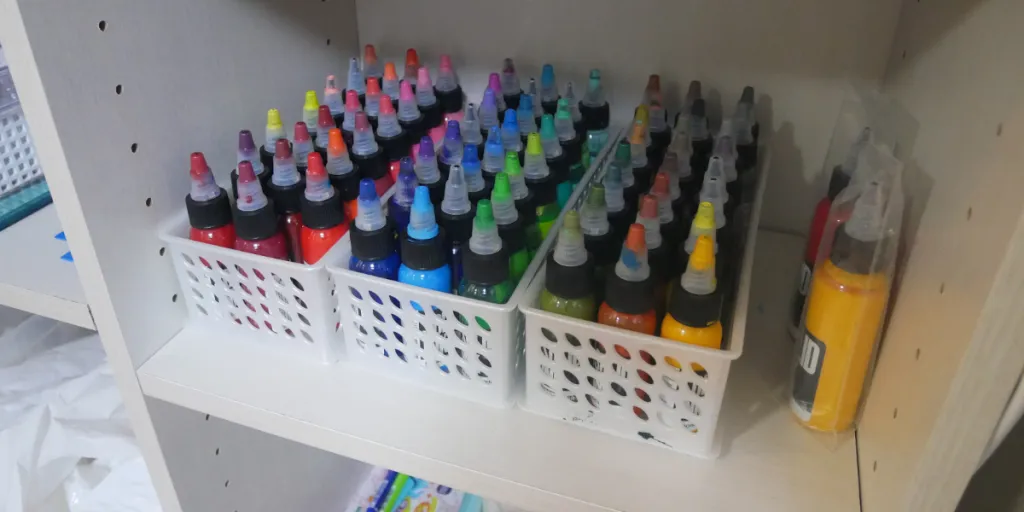Tattooing is vastly different from painting on the skin. Tattoos enter the skin’s second layer (dermis), staying locked in its cells. While they become visible on the outer layer, it doesn’t change the fact that it goes into the body.
That’s why selecting trusted and reliable tattoo inks does more than help consumers rock quality tattoos. Quality tattoo inks also prevent situations that may compromise the body’s wellness. Luckily, this article will show business buyers what to consider when choosing safe and reliable tattoo inks to sell in 2024.
Table of Contents
An overview of the tattoo ink market
What to consider when buying tattoo inks to sell in 2024
Three tips for selling tattoo inks profitably and safely
The bottom line
An overview of the tattoo ink market
The global tattoo ink market crossed the US$ 105.5 billion mark in 2023, with experts predicting it will reach US$ 259.5 billion by 2033. They also anticipate the market will register a 5.6% compound annual growth rate (CAGR) from 2023 to 2032.
The tattoo ink market owes its growth to the advancements in ink technology, evolving tattoo culture/trends, and expansion of the tattoo industry. Here are the key takeaways from the tattoo ink market:
- 12% of Europeans have at least one tattoo, with experts predicting the percentage will increase in the coming years. This rising trend will also help boost market demand.
- Based on ink type, monochrome inks accounted for 62.8% of the market share, while organic ink held 55.5% in 2023.
- Europe is the dominant region in the tattoo ink market, leading with a 38.5% (57.95 million) market share in 2023.
What to consider when buying tattoo inks to sell in 2024
Ink type
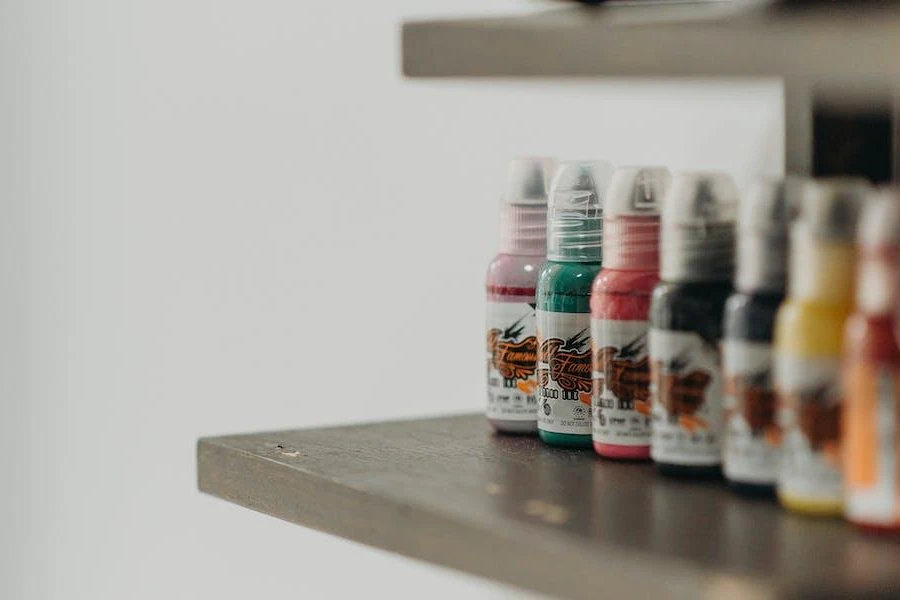
Tattoo inks are not a universal buy. They come in a range of types that business buyers should consider carefully before purchasing to sell. Thankfully, the list is not long. In fact, retailers only have to choose between three types: acrylic, vegetable inks, and otras tintas. Here’s a closer look at each of them:
Acrylic inks
Acrylic tattoo inks use pigments from metals like beryllium, arsenic, nickel, cobalt, and selenium. They’re the first choice for many tattoo artists due to their intense color payoff, meaning consumers will get vibrant and striking designs with this look. But that’s not all. Acrylic inks have incredible wear durability, allowing consumers to maintain their tattoo quality for years (with proper maintenance, of course!).
However, there are three things worth noting about acrylic inks. First, acrylic inks may create nasty side effects on sensitive skin, with allergies being the most common reactions. Second, these inks can make taking medical tests (like MRA) difficult, especially in the tattooed area. Lastly, acrylic is tricky to remove with a laser. Despite these drawbacks, many consumers prefer acrylic inks to other tattoo types.
Vegetable inks
These inks take an organic route to counter most of the downsides of their acrylic cousins. They have lower chances of causing terrible skin reactions and are nearly 100% exempt from causing allergies due to their hypoallergenic nature. Another benefit in favor of vegetable inks is that they assimilate better and absorb more easily into the body than acrylic inks. They’re also vegan, making them the go-to for consumers who care about animal cruelty.
However, vegetable inks are not without their pitfalls. Some rumors say vegetable inks are not as durable as their acrylic counterparts. So, designs may fade faster and more easily. Some people also say vegetable ink colors look very impressive, meaning tattoo artists must handle these inks more carefully during application.
Otras tintas
These are the inks popular for creating fluorescent and ultraviolet tattoos. While fluorescent tattoos glow in the dark without other light sources, ultraviolet ones can only become visible under UV black light. Because of these special effects, these inks often contain metallic pigments. Sometimes, they add vegetable or plastic elements to their formulas.
List of materials
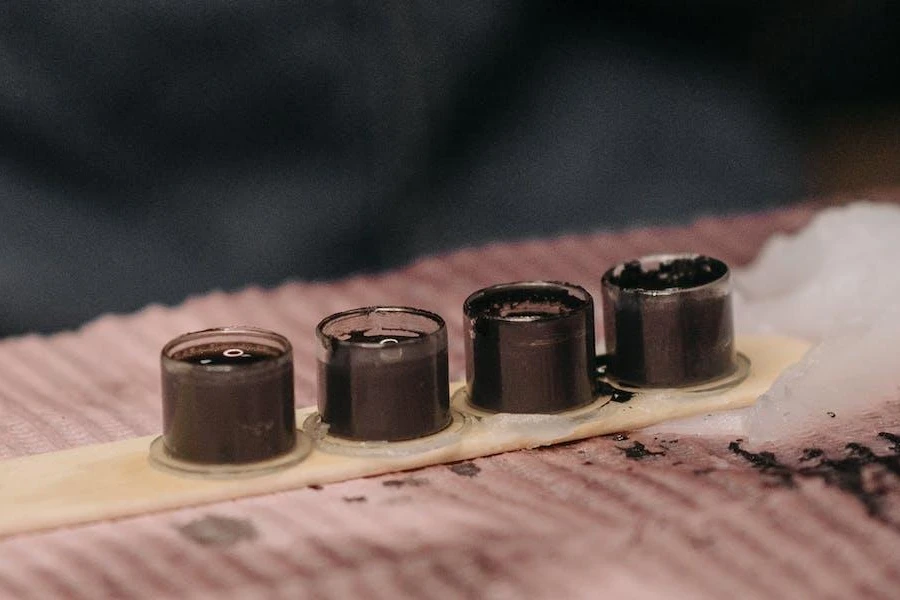
Tattoo inks can come with other ingredients to make a complete formula. So, business buyers must examine what manufacturers put in their tattoo inks to determine if they’re safe. Nonetheless, keep in mind that some suppliers won’t fulfill this request because they want to protect the secrets of their formula. But there’s an easy way around this slight roadblock. Retailers can request an ingredient list and MSDS (Material Security Data Sheet) instead.
After getting the needed information, scan through it to find any oddities. The Ideal tattoo ink can contain active ingredients like pigments and solvents. It can also have binders and preservatives to sanitize, reduce the odor, and maintain liquid consistency. However, it shouldn’t contain denatured alcohol, lead, glycol, and other cancer-causing compounds. Businesses must avoid such inks to keep their consumers safe.
Color options
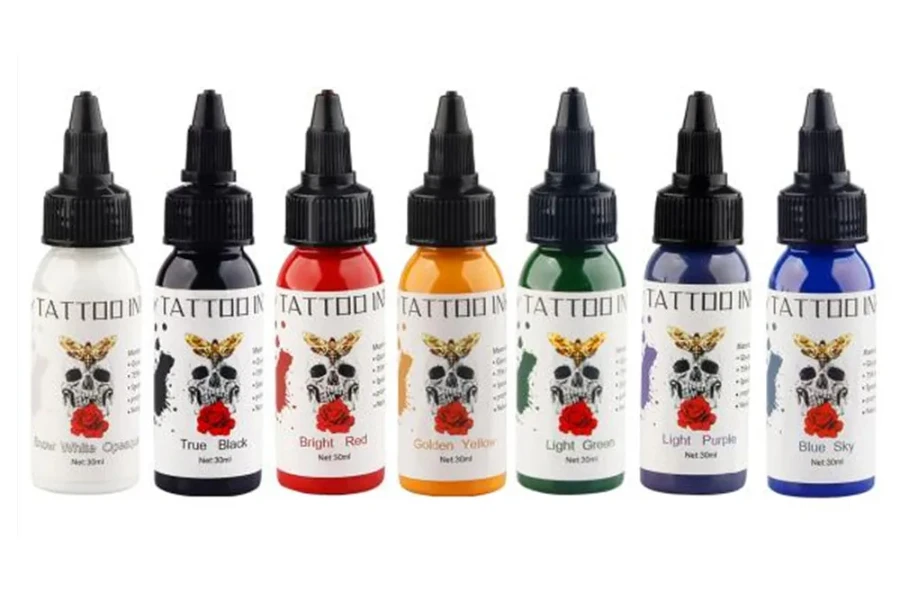
Tattoo inks also offer different colors. However, unlike other color palettes, tattoo ink colors react differently to the human body. Nevertheless, artists choose their preferred colors based on their style.
For example, artists specializing in monochrome designs will always go for black inks, white highlighting pigments, and gray wash sets. Conversely, color artists will want to explore more options to build a great palette.
The table below shows the different tattoo ink colors and their various effects:
| Tattoo ink color | Description |
| Black | Manufacturers mostly create these inks from carbon, meaning they may not contain harmful metals. However, some black inks may have phenol, which can cause allergic reactions. Nevertheless, black is the least harmful tattoo ink color. |
| Red | These inks use mercury as a base, making them the most dangerous tattoo ink color. They’re so harmful they can create allergic reactions years after the tattoo. Thankfully, many manufacturers replace the harmful ingredients with carmine ink, a more hypoallergenic variant made from insects. |
| Blue | Manufacturers make blue inks from cobalt salt, which can cause some issues on hypersensitive skin. Usually, it’s a chronic condition termed granulomas, a ring-shaped skin rash. |
| Yellow | These ink colors are relatively safe. Their composition includes cadmium and cadmium sulfide, which has a lower chance of causing allergies. If consumers react, it would be because of the intensity, not the ingredients. |
| White | These ink colors feature titanium or zinc oxide base, which ranks it as high as red ink (in terms of danger). |
| Green | Green ink uses chrome as a base element, which may cause skin reactions leading to eczema. |
| Violet | Here’s another safe color. Manufacturers make them from magnesium, making them low-risk tattoo ink colors. |
Three tips for selling tattoo inks profitably and safely
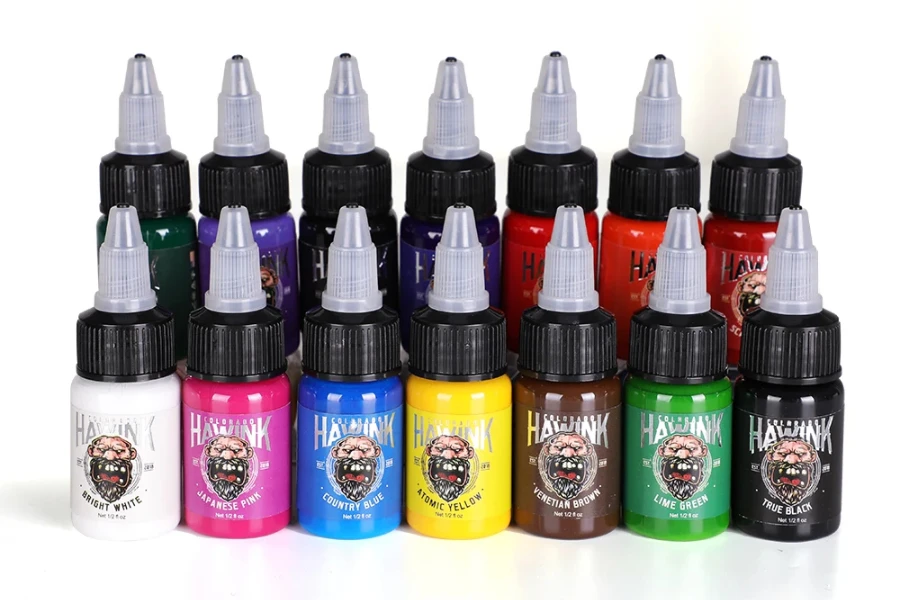
After setting up the tattoo ink inventory, there are a few bits business buyers must iron out before starting the business. Selling tattoo inks involves navigating legal and market considerations retailers must follow. The tips are as follows:
Tip 1:
Before selling tattoo inks, businesses must research the laws and rules in their business area. Such laws often dictate how retailers should go about selling these products. Different places may have different rules, so retailers must know the specific legal requirements for selling tattoo-related items, including labels, manufacturing standards, and safety measures.
Tip 2:
Additionally, business buyers must ensure the tattoo inks they’re buying from manufacturers follow safety and health rules for cosmetic or tattoo products. These rules help protect consumers from potential harm or health issues, so avoiding breaking them is a surefire way to increase sales.
Tip 3:
Lastly, business buyers must check if regulatory authorities require product testing or certification. They can order samples first to see if the products pass safety assessments and meet quality standards before ordering in bulk.
The bottom line
Inks are the most important part of the tattooing process. Since they’ll go into the skin, consumers are often conscious about the type of tattoo ink artists have in their arsenal. So, businesses must always pick the right tattoo inks to attract more consumers.
Nevertheless, selling them is a different ball game. Various governments have passed laws and regulations to help prevent the spread of fake, harmful products and ensure safety. So, retailers must take the time to ensure their products meet the safety guidelines and other legal requirements. After that, they can leverage the three tips discussed above to help boost tattoo ink sales in 2024.
